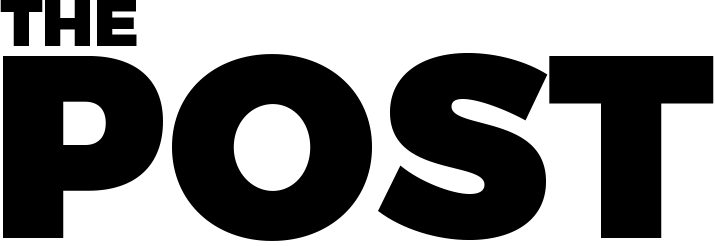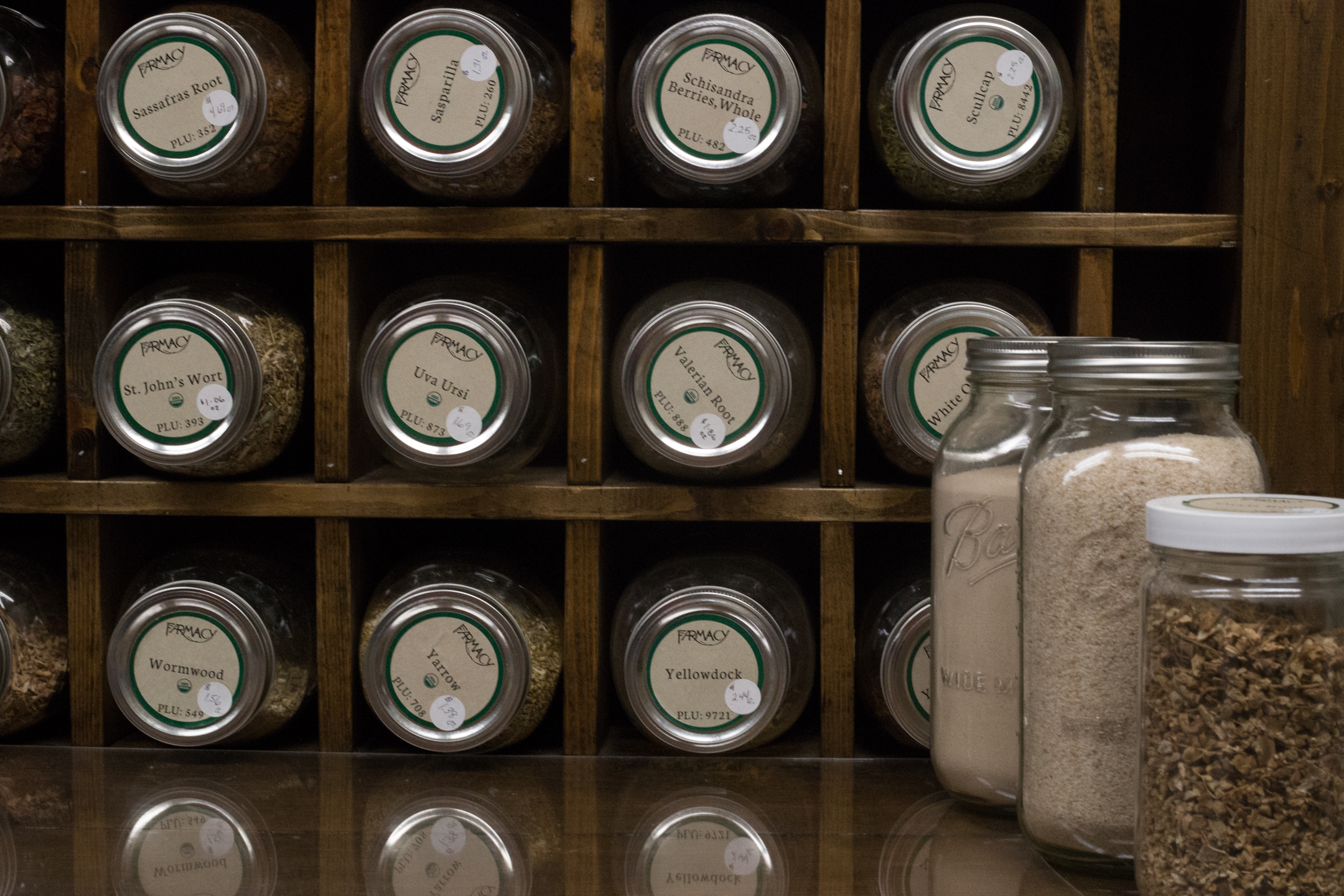Landing Page
Special Projects
This story is part of a series of specially designed stories that represents some of the best journalism The Post has to offer. Check out the rest of the special projects here.


ABBY DAY
09.27.17
Every day is an exploration of holistic, natural medicine for Ashley Eastman.
She eats a natural, healthy, mostly plant-based diet. She takes herbal supplements. She practices yoga and meditates daily. She spends her workdays at the Farmacy on Stimson Avenue, where she helps others find natural remedies for their own ailments by referencing extensive manuals on nutrition and herbal supplements.
Eastman immerses herself fully into a natural, healthy lifestyle – moreso even than most people who practice similar holistic medicine methods. Her interest in natural remedies was first sparked in the early 2000s when she came to Ohio University for her freshman year of college. She eased herself into diet changes, giving up soda first, then adopting a vegan diet for health and ethical reasons like animal rights. At the end of her academic career, she was hired at the Farmacy, where she met customers each day who were searching for natural medicines for everything from the common cold to serious chronic illnesses.

Hannah Schroeder | PHOTO EDITOR
Ashley Eastman, a manager at The Farmacy and worker there for the past ten years, checks out and helps customers looking for natural food, health or everyday items.
Over time, she adopted those natural methods herself and slowly moved away from treatment by doctors trained in modern medicine. Even now, she chooses to treat a thyroid condition with visits to complementary and alternative medicine (CAM) practitioners rather than be treated by an endocrinologist with surgery. To Eastman, simply removing the problem is not truly solving it because it fails to address what caused the problem in the first place.
“I would go to a Western doctor as a last resort,” Eastman said. “Even if I had something life threatening, I think I would still try to do the natural way because I find that it’s the most thorough and deepest healing.”
CAM and holistic medicine use is undeniably on the rise in the U.S. According to the National Institute for Complementary and Integrative Health, the number of adults who used CAM practices increased by more than 2 percent between 2002 and 2007. A study done by the School of Pharmacy at West Virginia University found women specifically were much more likely to practice or to have ever practiced CAM.
Studies also show women are turning to holistic methods for an array of reasons, from treatment of menopause symptoms to improving overall physical and mental well-being during treatment for breast cancer. Their motivations for seeking treatment outside the realm of modern medicine are as diverse as the treatments themselves.
Eastman practices natural methods as a direct alternative to modern methods. She calls holistic health her primary form of health care, and, despite acknowledging how natural health might not be a practical option for all people, she prefers to make comprehensive lifestyle changes for the sake of her overall well-being.
Western medicine, Eastman said, is very good at taking drastic measures to create drastic change. It works well for first aid and car crashes — the kinds of conditions that need fixed immediately. But when it comes to overall health, modern medicine falls short of creating lasting results.
“I find that natural health ... often will take longer to fully heal, but the result is often longer lasting health,” she said. “Not just one part of you is better. Usually when you’re addressing the root issues like a lot of natural health practitioners do, then all sorts of aspects of your health improve.”
“I feel like owning that responsibility of my own health care is not only empowering, but more fruitful.”Jen Jones, a staff member at the Athens Wellness Cooperative
People should not, however, make the overarching assumption that CAM modalities are always safer than modern practices, said Dr. Jane Balbo, a doctor of osteopathic medicine at Hudson Health Center and an expert on women’s health. Holistic practitioners and even herbal supplements mostly go unregulated in the United States, and there have been instances where people have tried natural remedies and caused damage to their bodies.
“I think that while people may be frustrated or fed up with Western medicine at times, it can be a little bit of a slippery slope to just make the assumption that all CAM therapies are safe or that they’ll be super helpful without any risk of harm,” Dr. Balbo said.
Jen Jones, a staff member at the Athens Wellness Cooperative, has worked as a licensed massage therapist for almost 20 years. She was also recently certified to work as a functional diagnostic nutrition practitioner, a kind of health coach.
Jones sees a balance of men and women clients for her massage services, but, in her recent ventures in nutritional coaching, she has found that more women are interested. She primarily treats clients for what she calls the impact of a stressful life.
When utilizing natural medicine, Jones thinks along the same lines as Eastman, only seeing Western doctors for serious injuries that need immediate attention.
“Personally, for me, it’s a way of life,” she said. “I feel like owning that responsibility of my own health care is not only empowering, but more fruitful."
Rebecca Wood, a long-time holistic health practitioner with a wide range of expertise, sees CAM methods as more of a supplement to the work of medical doctors.
Wood owns and operates Hopewood Holistic Health, through which she offers a range of services from private yoga and massage therapy to herbalism and nutrition consulting. She is a certified natural health professional, has 500 hours of yoga teacher training under her belt and is a reiki master. She calls herself a teacher or a coach, guiding her clients through practices and lifestyle changes to achieve a comprehensive form of health.
For several of her services, Wood sees more female clients than male. Her body work practices, like massage therapy, are utilized fairly equally between the sexes, but her yoga classes and “wellness journeys” to Central America are comprised of mostly women.
Regardless of gender, most of Wood’s clients see her because modern medicine isn’t meeting their needs fully. For whatever reason, be it a lack of a solid doctor/patient relationship or a particular problem simply has not been solved, people come to Wood looking for a new solution to an old health problem.
But Wood doesn’t see her services as replacements of doctors visits. Rather, she hopes people will consult both Western doctors and holistic practitioners to get the most out of both kinds of treatment.
“They all are important, and you might need all of them at one time,” she said. “Finding support, finding your own voice — that’s a pretty powerful step towards wellness, too."
Part of the driving force behind the influx of alternative medicine for women is the claim of sexist practices in the modern medicine world.
Patty Stokes, an assistant professor of women’s, gender and sexuality studies, said the rebellion of women against a patriarchal medical system has been present since the 1970s and continues today. It was sparked as a result of feminist critiques of medicine, which acknowledged a slew of sexist practices, including a lack of discussion of the prevalence of breast cancer, little attention given to heart attacks in women and the reluctance to treat women’s pain, particularly women of color.
The procedures involved in childbirth have particularly received plenty of criticism and consequential change since the ’70s. More often than not, women are turning to midwives and lamaze classes to get them through labor instead of hospital beds.
Stokes said in addition to changing their own habits, women could also be leading others to try holistic and natural health practices through their caregiving. Most caregiving, whether it be for children, spouses and the elderly, is done by women. That gives them a special influence in what kind of methods will be used to provide care.
“Women have a real gatekeeping role in their caregiving capacity in terms of what kind of remedies are going to be tried,” Stokes said. “So, if you’ve got women on board with trying something alternative, you’ve also got potentially a lot of kids, a lot of elderly folks, male and female, who might try these things.”
Balbo is reluctant to blame sexism in modern medicine for the increase in women seeking treatment elsewhere. Rather, she sees the seeking of medical care overall as a gendered experience.
She also thinks the trend of women being the majority of CAM utilizers can be explained through other data.
“If you look at utilization of medical services in general, they are more utilized by women than men, so to me, I don’t know that we can say (CAM) therapies appeal more to women,” she said. “Medical services are sought more by women, so it makes sense that women would select those in higher numbers than men ... because they’re going to the doctor more.”
Whatever the reason behind the spike in women turning to natural medicine, it has been a clear trend for decades now, and it’s catching the eye of Western doctors and potentially sparking change.
“I think that over the past 40 years, you’ve had a women’s health movement and an alternative movement, which overlaps, but they’re not identical,” Stokes said. “I think there’s been a big change among younger doctors, and even some of the older ones, who are often open to patients trying things.”

Hannah Schroeder | PHOTO EDITOR
AThe Farmacy, located on Stimson avenue in Athens, Ohio, is full of natural food ingredients, herbs, supplements, vitamins, oils and many other items that make natural medicines accessible and possible for Athens residents.
Landing Page
This story is part of a series of specially designed stories that represents some of the best journalism The Post has to offer. Check out the rest of the special projects here.